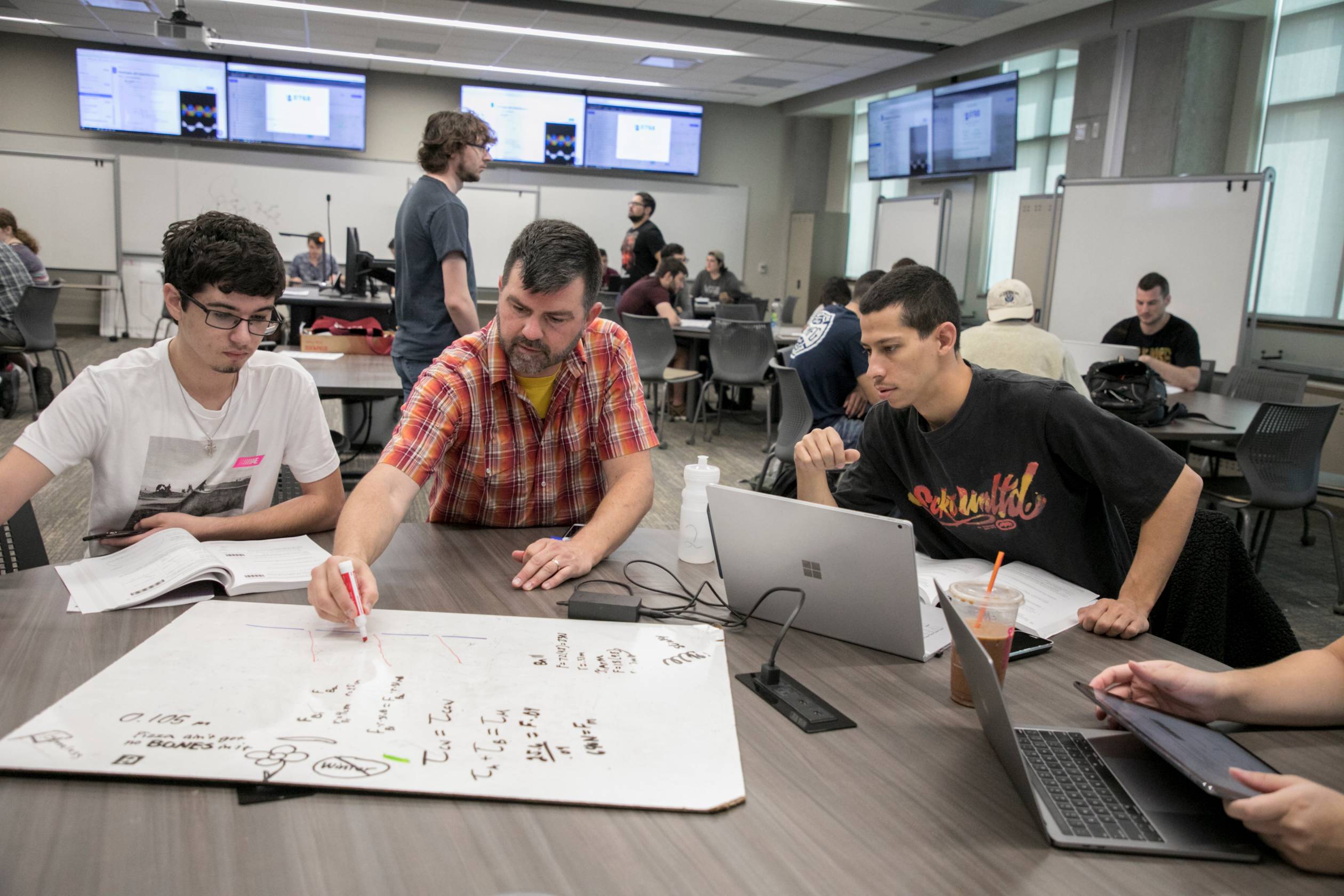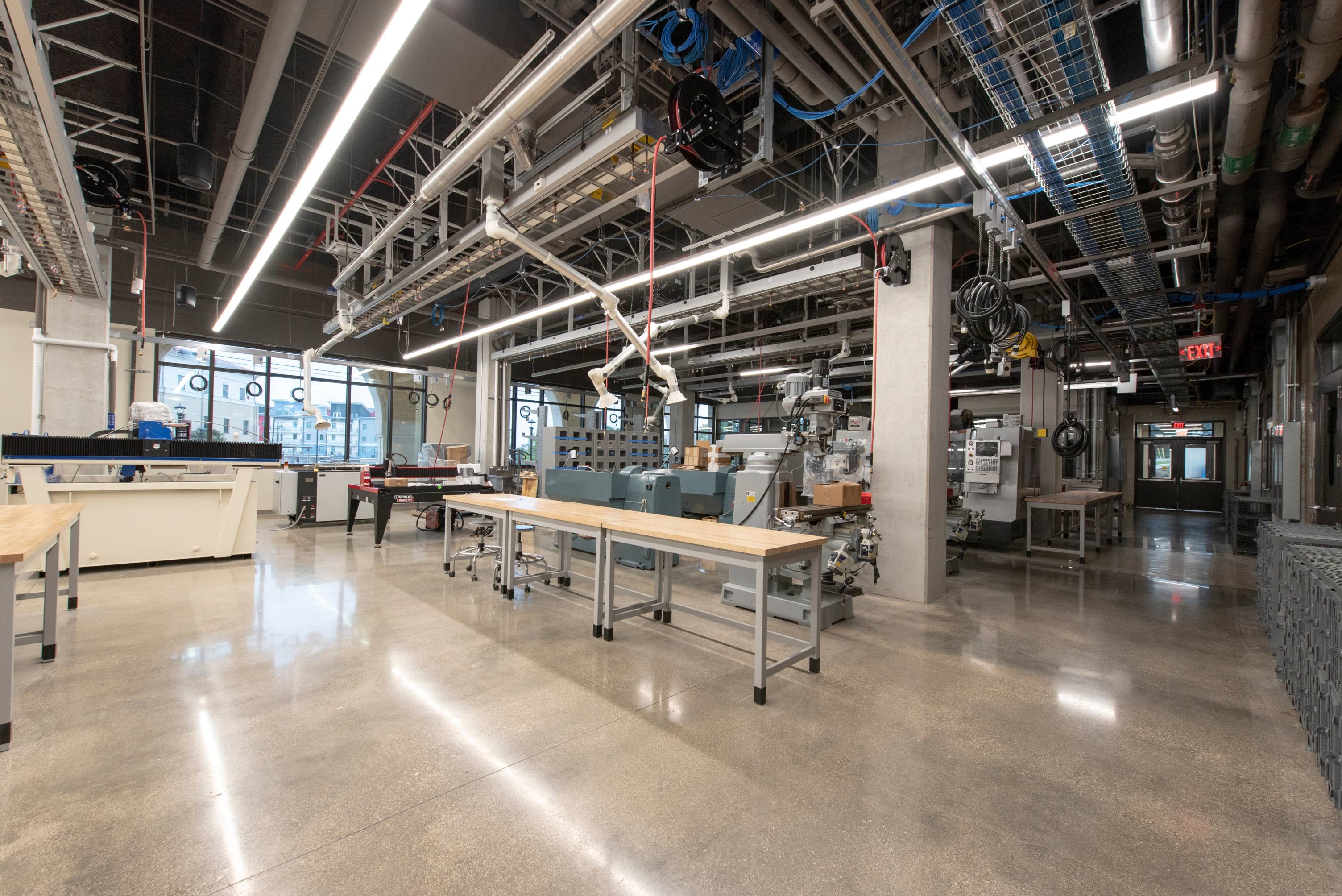Inside Ingram Hall
Sandy Pantlik | November 8, 2018
Every square foot of the more than 166,000 comprising the new Bruce and Gloria Ingram Hall at Texas State University was designed to support collaboration, innovation, research and student success. Engineering and science faculty offered input to create cutting edge learning and research spaces that prepare graduates for their chosen field.
Explore Ingram Hall in 360 degrees
Here are examples of some of the building's most innovative spaces:
SMART Lab
With an indoor work area connected to an outdoor patio, the SMART Lab will make it easier for students to do experiments outside — collecting data using solar panels, wind turbines and sensors — and then do analysis indoors on computers.
“Active learning requires students to have equipment, tools, knowledge and space to convert theory into reality, and the SMART Lab makes this possible.” — Dr. Semih Aslan

Active learning classrooms
The configuration of furniture and technology in the biology classrooms highlights students as the center of the learning environment and promotes collaborative interactions.
The small classroom has been designed as a smart, active learning environment with six, four-person tables, each outfitted with a monitor display, power access, wired and wireless laptop input, a document camera, and a built-in microphone. The large classroom, a mix between the traditional classroom model and a SCALE-UP active learning environment, is outfitted with six-person D-shaped tables so students can easily work in a group or face a presenter.
“In the new Ingram Hall, we designed classroom spaces in a manner that highlights an active-learning environment,” — Dr. Kristy Daniel

Makerspace
From old-school woodworking and welding to the latest in 3-D digital printers and laser cutters, Ingram Hall’s 6,000-square-foot makerspace incorporates tools and equipment from the electrical engineering, industrial engineering, manufacturing and civil engineering programs once scattered around various campus workshops into a central, accessible location while adding new technology, safety features and research facilities.
“My goal is to have as many students using the Maker Space as possible and not just engineering students, because you never know who might come up with a good idea.” — Dr. Austin Talley
Share this article
For downloadable hi-res images from this article, please view the link below.
Download Hi-Res Images >
For more information, contact University Communications:Jayme Blaschke, 512-245-2555 Sandy Pantlik, 512-245-2922 |